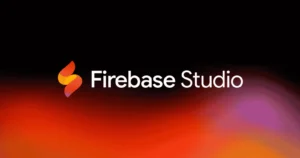In a world where content is created faster than we can consume it, a new paradigm of information processing is emerging. AI transcript tools like TransTube are not just conveniences—they represent a fundamental shift in how we interact with video content and process information in the digital age. This transformation has profound implications for learning, professional development, content creation, and even how we structure our daily information diet.
Table of Contents
- The Information Overload Crisis
- The Evolutionary Response: AI Transcript Tools
- How TransTube Is Pioneering This Transformation
- The Cognitive Science Behind the Shift
- Modality Effectiveness
- Processing Speed Differentials
- Cognitive Load Theory
- Five Ways AI Transcript Tools Are Reshaping Information Consumption
- 1. The Rise of Multi-Modal Learning
- 2. The Emergence of “Information Triage”
- 3. The Democratization of Content Analysis
- 4. The Transformation of Content Creation
- 5. The Evolution of “Reading” in the Digital Age
- Ethical and Cultural Implications
- Information Equity
- The Value of Depth
- Creator Economics
- Embracing the Future of Content Consumption
- Conclusion: The Adaptive Information Consumer
The Information Overload Crisis
- Over 500 hours of video are uploaded to YouTube every minute
- The average American spends 7 hours daily consuming digital content
- Knowledge workers spend 2.5 hours per day searching for information
- Only 20% of viewers typically watch an online video to completion
- Global data creation is projected to grow to 180 zettabytes by 2025
This explosion of content has created what psychologists call “information overload”—a state where the volume of available information exceeds our cognitive processing capacity. The result is decreased productivity, increased stress, poorer decision-making, and a sense that we’re constantly falling behind. Learn more about this in our guide: How to Optimize Your Learning Process with AI Video Transcript Summaries.
The Evolutionary Response: AI Transcript Tools
- Transforming modalities: Converting time-linear video content to scannable, searchable text
- Condensing information: Distilling hours of content into minutes of reading
- Prioritizing importance: Using AI to identify and highlight key points
- Enabling asynchronous processing: Allowing information consumption on the user’s schedule and pace
How TransTube Is Pioneering This Transformation
TransTube has emerged as a leader in this space by offering a specialized solution for YouTube content—the world’s largest video repository. With its ability to extract complete transcripts and generate concise summaries from any YouTube video, TransTube exemplifies the new breed of information processing tools that are changing how we consume content.
The service offers two subscription tiers:
- Plus Plan ($6.99/30 days): Process up to 1,000 YouTube videos per month
- Pro Plan ($9.99/30 days): Process up to 2,000 YouTube videos per month
These plans provide users with unprecedented capacity to process video content at scale—something that would be physically impossible through traditional viewing methods alone. For more information, check out How to Optimize Your Learning Process with AI Video Transcript Summaries.
The Cognitive Science Behind the Shift
Modality Effectiveness
Research shows that different information modalities have distinct advantages:
- Video excels at: Emotional engagement, visual demonstrations, personal connection
- Text excels at: Information density, processing speed, searchability, skimmability
By converting video to text, AI transcript tools like TransTube leverage the strengths of both modalities.
Processing Speed Differentials
The average person speaks at 150 words per minute, while average reading speeds range from 250-300 words per minute. For complex information, text allows for variable pacing—slowing down for difficult concepts and speeding up for familiar ones—a flexibility that linear video lacks.
Cognitive Load Theory
Cognitive load theory explains that our working memory has limited capacity. Video often imposes high “extraneous cognitive load” due to its transient nature—information disappears as the video progresses. Text reduces this load by allowing readers to control the pace and revisit information as needed.
Five Ways AI Transcript Tools Are Reshaping Information Consumption
1. The Rise of Multi-Modal Learning
Rather than replacing video viewing entirely, AI transcript tools are enabling “multi-modal learning”—the practice of engaging with the same content in different formats to enhance understanding and retention.
2. The Emergence of “Information Triage”
Just as medical triage prioritizes patients based on urgency, “information triage” involves strategically deciding which content deserves your full attention, which can be consumed in summary form, and which can be skipped entirely.
3. The Democratization of Content Analysis
Historically, detailed content analysis was limited to those with time and resources to process large volumes of information manually. AI transcript tools like TransTube democratize this capability.
4. The Transformation of Content Creation
Content creators are adapting by structuring videos more clearly, providing timestamps, and creating content optimized for AI summarization and multi-modal consumption.
5. The Evolution of “Reading” in the Digital Age
The definition of reading is expanding to include AI-generated content derived from other media, combining the efficiency of text with the richness of video and audio.
Ethical and Cultural Implications
Information Equity
AI transcript tools can reduce information inequality by making video content more accessible to people with hearing impairments, non-native speakers, those with limited bandwidth, and individuals with learning differences.
The Value of Depth
While summaries increase efficiency, deep understanding and nuance still require time and attention. Balancing speed with depth remains essential.
Creator Economics
Content creators may need to adapt monetization strategies as consumption patterns shift, potentially offering premium transcript and summary services.
Embracing the Future of Content Consumption
- Build a personal knowledge management system incorporating AI-processed content
- Develop new information literacy skills for multi-modal content
- Curate high-value sources and process them with AI tools
- Practice intentional consumption with clear objectives
- Create feedback loops between summaries and full content

Conclusion: The Adaptive Information Consumer
AI transcript tools like TransTube represent an evolutionary adaptation to information overload, enabling us to process more content efficiently without sacrificing comprehension. The future belongs to those who can effectively filter, process, and synthesize information into usable knowledge. By embracing these tools, we can transform information overload into a source of growth and advantage.
Ready to transform how you process video content? Visit TransTube.io today and discover how AI transcript summarization can help you navigate the future of information consumption.





[…] The proliferation of video content presents a paradox. On one hand, video is an incredibly rich medium, capable of conveying information through visual demonstrations, emotional cues, and personal connection. On the other hand, it’s inherently time-intensive and linear, requiring viewers to commit substantial time to extract information that might be contained in just a few key moments. For more information, check out The Future of Content Consumption: How AI Transcript Tools Are Changing How We Process Information. […]